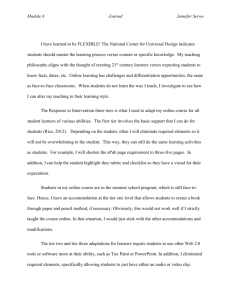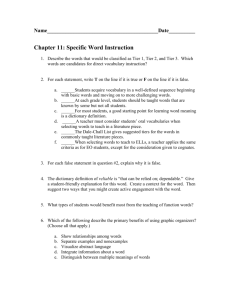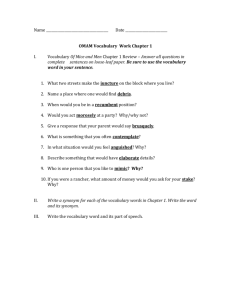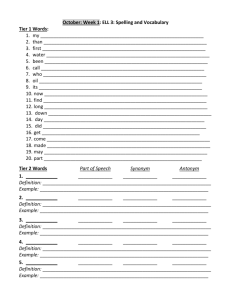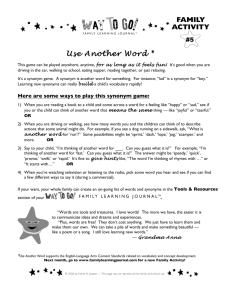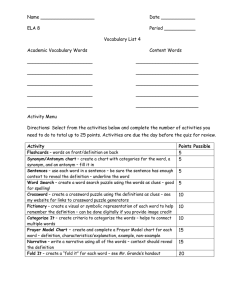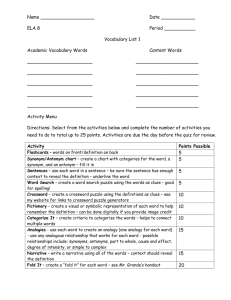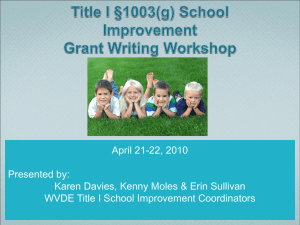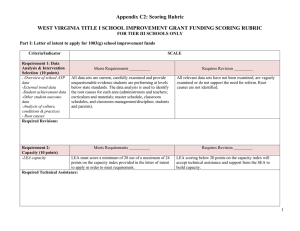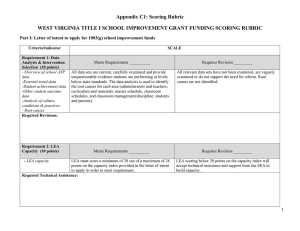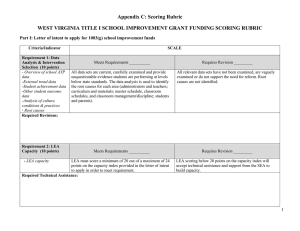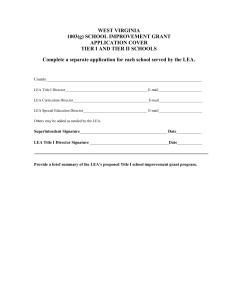Chapter 7 Power Point
advertisement
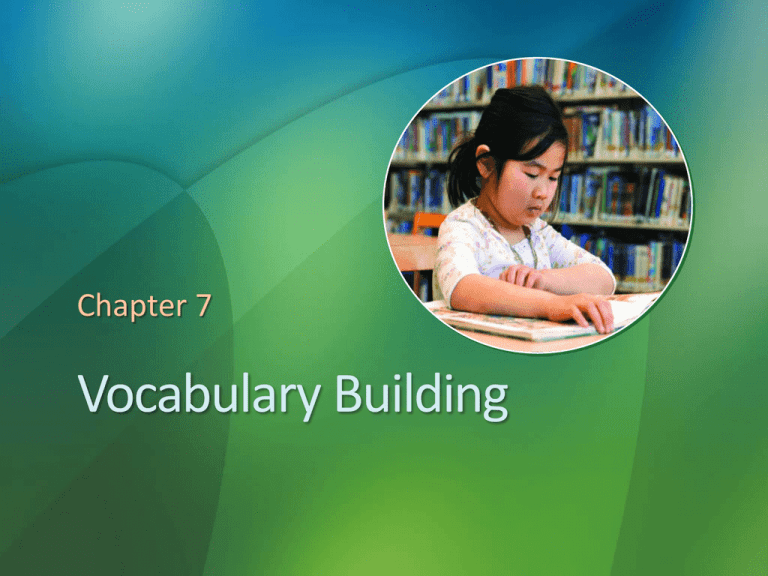
Chapter 7 Vocabulary Building Reflections on Vocabulary Building How do you feel when you’re at a meeting or in class where everyone is using jargon with which you are not familiar? Do you ask someone to explain what they’re talking about, or do you try to determine meaning from the context? Do you ever find yourself using jargon with friends or colleagues? Do you define your words when a new person joins the group? When Teaching Vocabulary Teachers Need to Know… How proficient readers naturally enrich their vocabulary How to teach vocabulary explicitly How to meet the vocabulary needs of English learners How to assess struggling readers’ vocabulary Word Tiers Tier one words: Common words used in everyday conversation (house, car, sleep) Tier two words: Less frequent, but interesting words (persuade, exhausted) Tier three words: Rare words that are used in a particular context (psycholinguistic, paradigm) Aspects of Knowing a Word How to pronounce it correctly How it relates to other words How it is used in various contexts How to use it in multiple settings How to use it when writing How it may have multiple meanings How to know its morphology (derivation) Ways to Increase Vocabulary Life experiences Vicarious experiences: Educational videos, TV, Internet, variety of books and texts, etc. Direct, or explicit, instruction How do you increase your own vocabulary? Books? Television/movies? Word-of-the-day emails? Guidelines for Explicit Vocabulary Instruction (Flynt and Brozo, 2008) Choose words students need to know Expose students to selected words several times, and use the words in discussion Teach students to infer word meaning by looking for context clues and word parts Use vocabulary maps and word association to demonstrate relationships among words Teach students how to analyze words and derivations Teach students multiple meanings of words More Guidelines for Explicit Instruction Teach new words Teach word-learning strategies Context clues Word hierarchies Language concepts Language Concepts and Hierarchies Synonyms Antonyms Homophones Neologisms Portmanteaus Acronyms Euphemisms Oxymoron Regionalisms Puns Onomatopoeia Meeting the Vocabulary Needs of Struggling Readers Use word play to help them develop a love of words. Teach important words, discuss them, and revisit them often. Teach strategies so students can decipher new words as they encounter them. Provide a wide range of texts in a variety of contexts: Literature circles, guided reading groups, shared reading, book clubs Meeting the Vocabulary Needs of English Learners Implement instruction that builds from one grade to the next Teach high-frequency words in phrases Teach higher-level or academic words Teach strategies that help learners infer word meanings Be real when teaching new words and definitions: Real objects, visual images, graphic organizers, drama Engage students in activities that will help them learn new words Accepting Students and Their Limited Vocabulary Be patient Work to develop students’ oral/aural language abilities and their reading skills simultaneously Provide students with help in an environment that focuses on strengths and successes and that minimizes weaknesses Assessment of Vocabulary Informal assessment Conversation and observation Cloze tests Maze tests Zip tests Synonym tests Checklists Formal assessment Standardized achievement tests Group diagnostic tests Individual diagnostic reading tests Vocabulary Growth Checklist For First Grade Based on Florida State Standards Intervention Strategies and Activities Use a variety of strategies to prevent students from becoming complacent Make activities enjoyable and engaging Teach words in context: Associate words with the topic being studied, so they will be used and remembered. Intervention Strategies Focusing on Building Vocabulary Vocabulary bookmarks Predict-o-gram Figurative speech Language experience approach (LEA) Language Experience Approach (LEA) An effective technique for: Introducing students to oral vocabulary in written form Teaching literacy Reading, writing, and other language arts are viewed as interrelated Students’ experiences used as basis for reading Variations on LEA Wordless books Science experiment Listening walk Schoolyard safari Total Physical Response (TPR) Categorizing More Intervention Strategies Focusing on Building Vocabulary Possible sentences Analogies Origin of words Crossword puzzles Synonym/Definition Concentration Cognate picture cards Multiple Meaning Racetrack (continued) Crossword Puzzle Based on Literary Terms More Intervention Strategies Hink Pinks Lexical and structural riddles Word Expert Cards Collaborative activities Music Puzzlers Matching Game Two Cube Game Pictionades Action Jeopardy Vocabulary Building and Technology Ebooks: Feature verbal word pronunciations and definitions Can read to the student, or can be set so the student reads the text Include games Websites: www.languageguide.org/ english www.point4teachers.com www.discoveryeducation. com/freepuzzlemaker Related Video Presentation You can see a video of the Concentration activity in action (Teaching Vocabulary Through Synonym/Vocabulary Concentration; this is related to the activity shown on pages 169–170 of the chapter).
